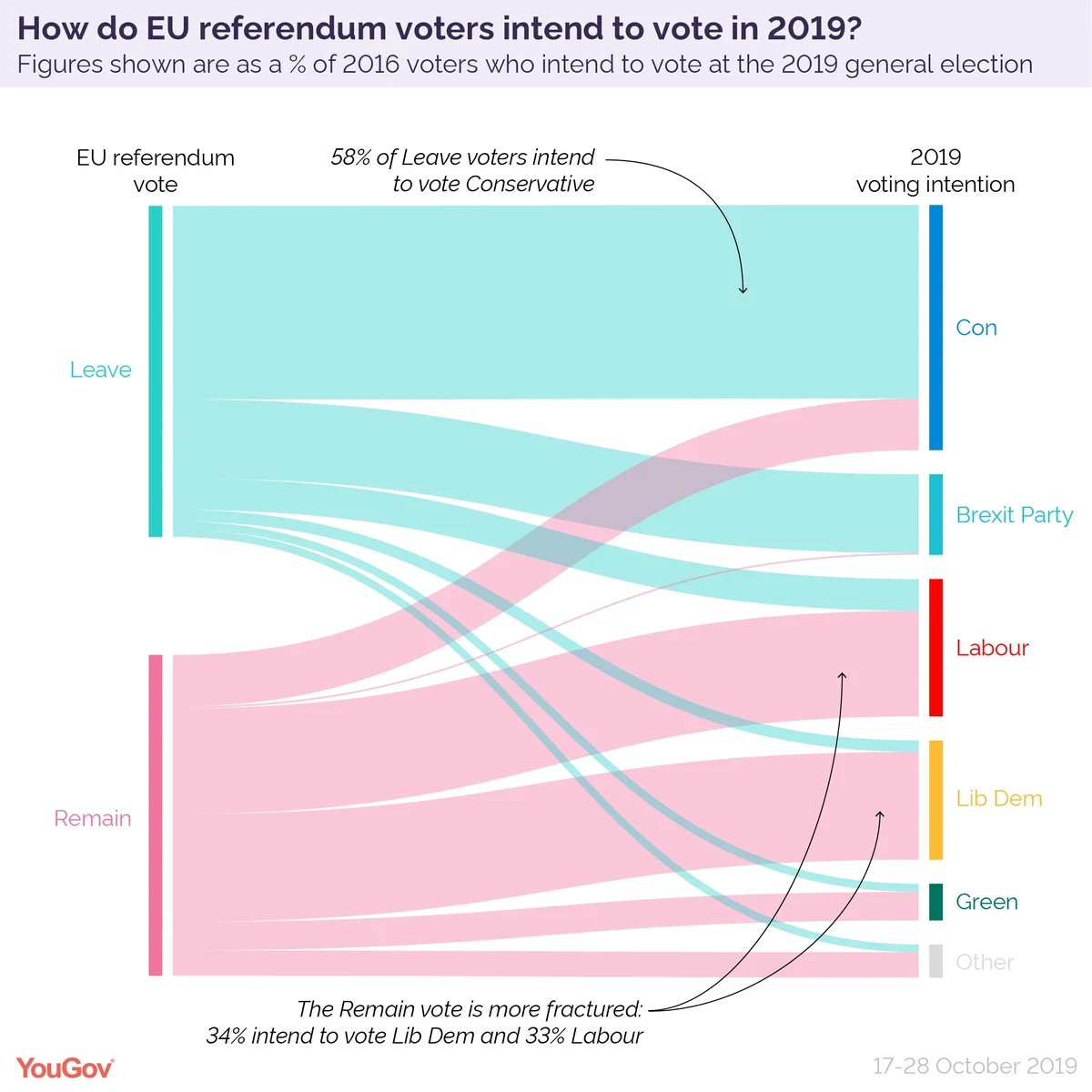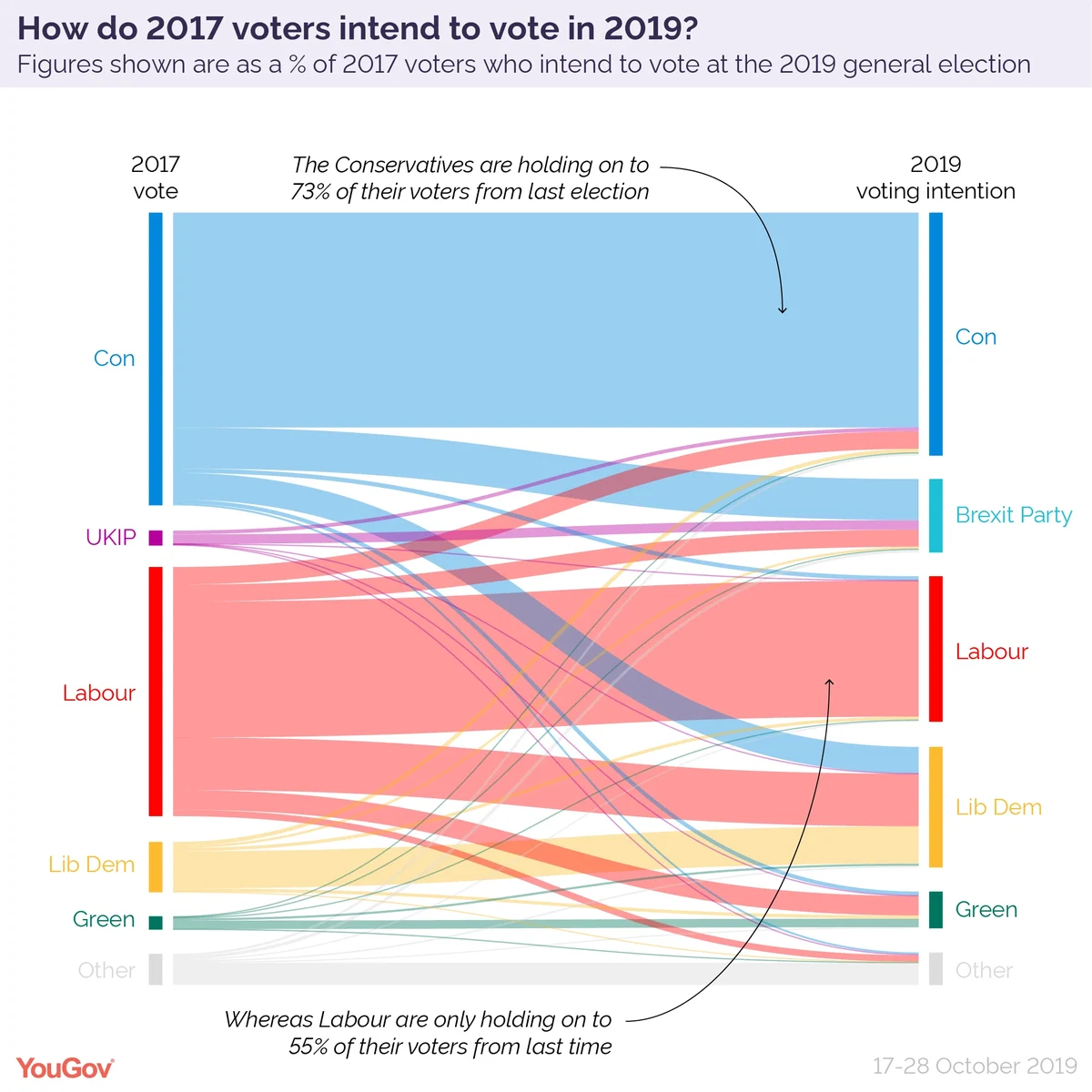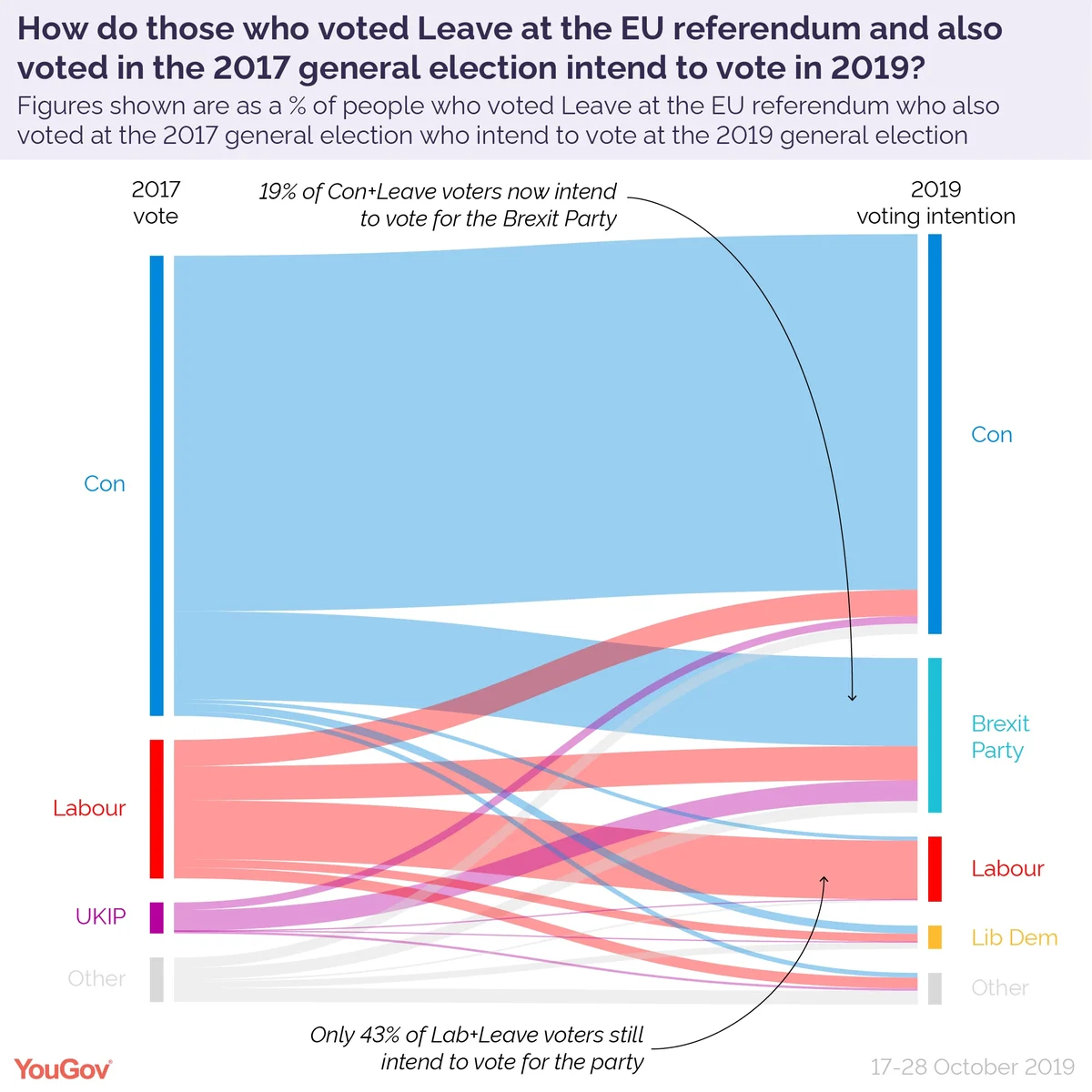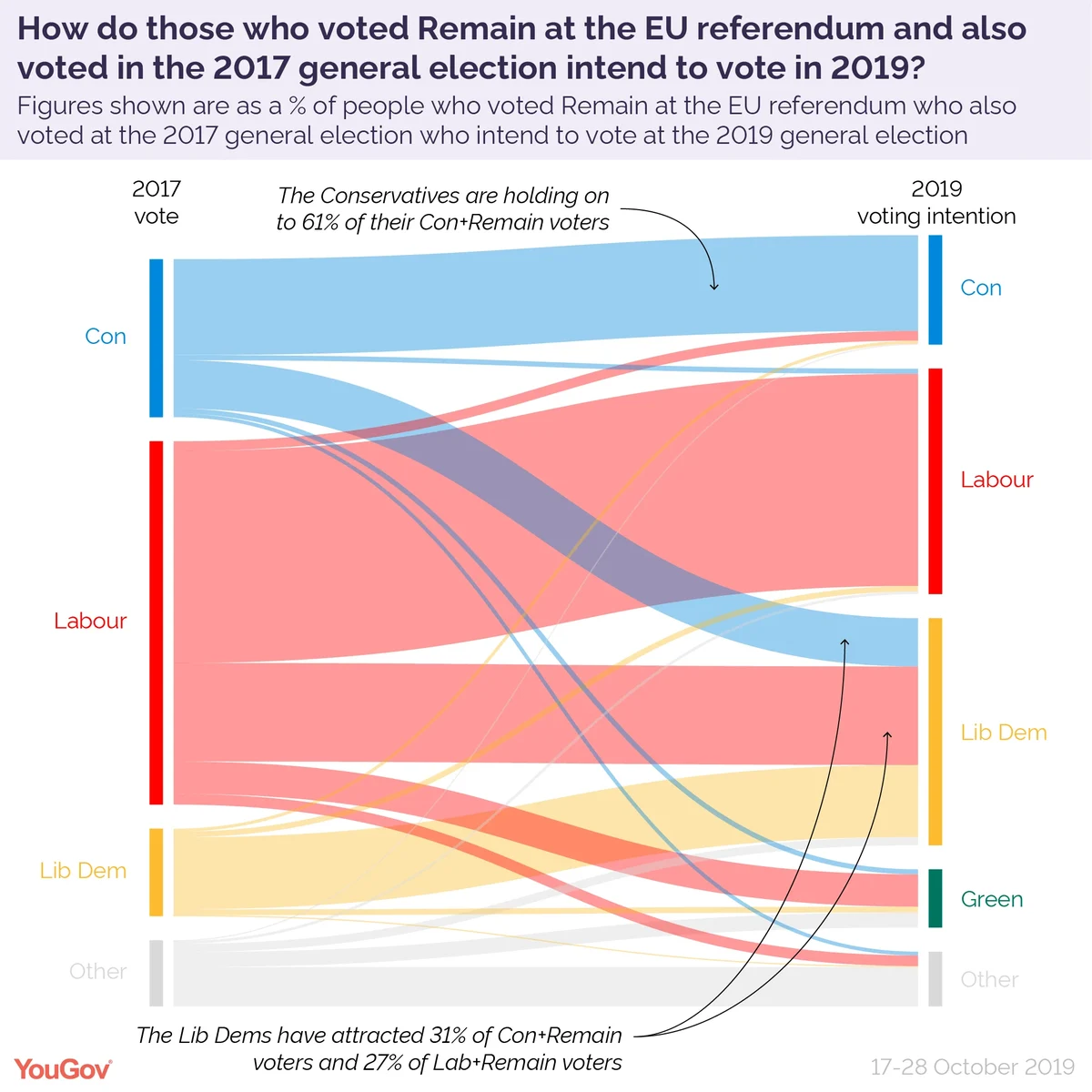In a survey of 11,000 Britons we reveal where the public stand at the start of this general election campaign based on past voting behaviour
2016 EU referendum vote
There has been a significant realignment in how the public votes in general elections brought about by Brexit. We saw it to some extent in the 2017 general election, and it has only grown since.
As things stand, eight in ten 2016 Leave voters say they will either vote for the Conservatives or Brexit Party, while two thirds of Remain voters intend to back either Labour or the Liberal Democrats.
With Brexit proving so divisive, and Labour and the Conservatives holding contrasting positions on the issue, it seems unlikely that each party will win over many voters from opposing camps. Instead, the key battles nationally look set to be between Labour and the Liberal Democrats amongst Remain voters, and between Conservatives and Brexit Party amongst Leave voters.
With this in mind, the Conservatives are in a much stronger position at the start of the campaign than Labour. Since Boris Johnson became Prime Minster they have successfully chipped away at the Brexit Party’s support and currently have 58% of 2016 Leave voters.
A quarter of this group still intend to vote Brexit Party, and so a lot of Johnson’s ability to gain a majority will hinge on how strong the Brexit Party’s campaign is. On the Remain side there is nothing to split Labour and the Lib Dems, both currently picking up a third of the vote share. With both parties so reliant on Remain voters, the Liberal Democrat’s strong position amongst this group has been a key factor in Labour’s slump in the polls.
2017 general election vote
During the 2017 general election we saw a return to two-party politics, with Labour and the Conservatives enjoying a combined vote share of 82%. Currently however, they account for just 58%.
While winning over new voters will be key for all parties during the campaign, holding on to their 2017 voters could prove crucial for the Conservatives and Labour.
The Conservatives will be a lot happier with their retention of voters than Labour, currently keeping around three quarters of their 2017 voters. Conversely, just 55% of 2017 Labour voters say they intend to vote for the party again. Most of these lost voters say they intend to vote Lib Dem, accounting for a fifth of the 2017 Labour vote.
2016 EU referendum vote and 2017 general election vote combined
With Brexit likely to dominate this year’s election, movements based on voters’ combined 2016 EU referendum vote and 2017 general election vote could also prove crucial to the result.
Unsurprisingly, the Conservatives are doing a good job of retaining Leave voters who voted for them in 2017, with 77% staying loyal to the party. Perhaps more impressively, however, is that they are also doing a reasonable job keeping their 2017 voters who backed Remain.
Despite Boris Johnson shifting the party’s position to a harder Brexit than his predecessor, 61% of 2017 Conservative voters who also backed Remain in 2016 say they will still vote Conservative.
Those who intend to leave the Conservatives are almost exclusively switching to the Liberal Democrats, who have almost a third of the 2017 Conservative, 2016 Leave vote. Labour on the other hand are struggling to hold on to both their Remain voters and Leave voters from 2017. Only 58% of those who voted Labour in 2017 and Remain in 2016 currently say they will vote Labour. A quarter say they will vote Liberal Democrat and 9% Green.
The picture is much starker amongst Labour Leavers with the majority saying they will abandon the party for the upcoming election. Just 43% of this group say they will vote Labour with the Brexit party (25%) and Conservatives (19%).














